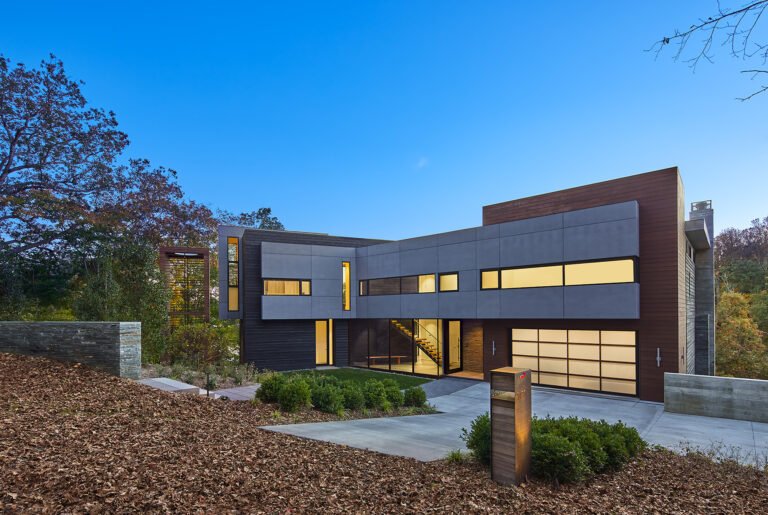Raúl Monterroso: “We Seek to Make Society Aware of Guatemala’s Modern Architectural Values”
Raúl Monterroso: “We Seek to Make Society Aware of Guatemala’s Modern Architectural Values”

Raúl Monterroso is one of the referents when it comes to talking about the modern movement in Guatemala. Not only has he been a promoter of the preservation of the country’s architectural legacy with his publication “The Guatemala City Guide to Modern Architecture“, but he has recently collaborated with the Museo Experimental el Eco for its Re_vista 05 with a critical analysis titled “Modern dreams, magical realism and other fantasies of yesterday and today”, which seeks to be a window for anyone to question and get involved with Guatemalan architectural values.
In the following interview, Raúl presents his inspirations and reflections on this topic, while also discussing his vision of other ways of telling the story of Guatemala’s architecture.

Fabian Dejtiar (FD): As guest editor of Re_vista 05 at the Museo Experimental el Eco, your work “Modern dreams, magical realism and other fantasies of yesterday and today” is a critical analysis of modernity in Guatemala. What inspired you to address this topic in the first place?
Raúl Monterroso (RM): When I received the invitation from Gabriel Escalante of the Museo Experimental El Eco, taking into account the wide dissemination and good acceptance of the ‘Guatemala City Guide to Modern Architecture’, I proposed a critical approach to architecture in Guatemala, starting from modernity. Like the guide, beyond satisfying scholars, it seeks to be a window for people to take a look at architecture, the city, and the spaces they inhabit, to question them, and why not say it, to fall in love with architecture, as a cultural expression that has accompanied humanity since that first intention to transform reality. But above all, it seeks to be a contribution to strengthening a weak architectural culture, to reach other audiences, not only architects.

FD: It is interesting how you sought to create a virtual space with different layers and face-to-face and hybrid activities. How did you end up organizing the contents? What were your main reflections on this way of presenting?
RM: The idea is to create a virtual space that shows a timeline, a journey of 80 years, divided into four segments: modern dreams, magical realism, spatial fantasies of yesterday and today, and tropical utopias. It is a journey to know the past, understand the present and think about the future of architecture and the architects from Guatemala. Each of them begins with a question, to invite the visitor to seek the answer through an introductory text, then a carousel with videos in which the participation of expert guests on the subject is recorded, some in a quite casual way and others in a more elaborate way, but always with the idea of talking. In the first segment, you can consult the Guide to Modern Architecture, all while making the tour accompanied by a soundscape designed to complement the sensory experience. The information culture offers a sea of options ranging from the www, social networks to ICTs, in all of them we can find any information, especially after the pandemic. It is important to return to the face-to-face exchange, which is why the complementary activities were designed in person and a written document as a fanzine with the intention of leaving a document that can be preserved beyond the ephemeral nature of a publication in social networks.

FD: This seems to continue your ‘Guide to Modern Architecture in Guatemala City‘, which seeks not to be a catalog but “an open invitation to everyone to go out and walk around the city”. After these experiences, what other ways are you thinking of to tell the story of Guatemala’s modern architecture?
RM: From the Docomomo_gt platform and for more than 10 years we have promoted communication strategies whose objective is to sensitize society in general about the heritage values that can be highlighted from this legacy; but above all, to highlight those aspects of the thesis of modernity that are still valid and can be useful for, from our field of competence, which is architectural design, facing the challenges of the future. In addition to the participation in Re_vista 05 at the Museo Experimental El Eco, a performance lecture was organized with Alejandro Leal, to reflect on the history of modernity and how this movement reached Mexico City and Guatemala City. Then an interview with David Miranda, to present my collaboration with the museum, all this is complemented by the publication of a fanzine to also leave a printed document, of good quality, but easily accessible.

FD: What other aspects of Guatemala’s architecture do you think need to be shared today?
RM: Today the exercise of architecture is assumed from a platform that seeks to activate emotional, collective, ancestral, and decolonial processes and intelligence. Visitors will be able to see and hear these voices in the “Tropical Utopias” segment. Voices from the territory take on the challenge of contemporaneity and the future, in which architects, artists, and other professionals recover their leading role in society, as managers of integral development and transformers of realities into opportunities for social and environmental regeneration. The new generations understand that problems such as climate change, social conflicts, and economic inequalities that characterize the contemporary habitat are complex challenges and need to be addressed through systemic processes and not only from real estate speculation, this is the last call to the possibility of designing better spaces for a better quality of life.



